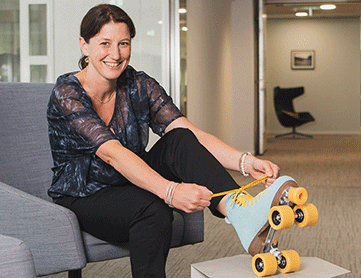HIV still in
HIV still in
The first HIV and AIDS cases were reported in the United States in 1981. First, it was thought to be a sexually transmitted disease among homosexual men, but it soon became clear that anyone could be infected by the virus. In the meantime, the disease had turned into a larger epidemic in Africa, where it was known under a different name. Throughout the world the epidemic caused many casualties as well as fear in society. Because little was known about the transmittance of the disease, people living with HIV were often excluded [1]. Over the last years a better education has caused a decline in the amount of new infections. Progress has also been made in terms of treatment of the disease: antiviral drugs were developed that suppress the virus and prevent the development of AIDS. Given the right treatment, life expectancy for people living with HIV is now near-normal. Despite these improvements, there were still 36,9 million people infected with the HIV-virus worldwide in 2017 [2]. Until today the disease plays an important role in our society.
Passion For Life
Each day, physicians, nurses, researchers and volunteers in Belgium devote themselves to ensure the best possible HIV-care. They do so day after day with great enthusiasm. In order to highlight their enthusiasm, we are launching the magazine ‘Passion For Life’, together with patient organisations Sensoa and Plate-forme Prévention Sida. The magazine is filled with testimonials and stories of the different actors in the Belgian HIV-care. Both the physical and mental aspects of the disease are featured in the magazine. How do people who live with HIV deal with age-related diseases, pregnancy and sexuality? How do they and their beloved ones deal with the diagnosis? How can we tackle the stigma, which remains one of the main challenges that people who live with HIV face? Read ‘Passion For Life’ and find out how the different actors in the HIV-care try to answer these questions each day. The magazine is available from January 15th, also online.
HIV still in play
In the run-up to the 30th World AIDS day on December 1st, our campaign ‘HIV is still in play’ wants to raise awareness for HIV in a positive way. Although much has changed since the 80s - when HIV was first discovered - the disease continues to play an important role in many people’s lives. In the 80s many iconic gadgets, that remain recognisable to this day, were part of our daily lives. But what about the disease that came to rise in the same decade and which had such an impact? Using those iconic gadgets from the 80s, we put a spotlight on HIV: we discuss the complexity of research for new treatments, the partnerships that we formed, as well as the ever-existing stigma. Will you help us spread the story on social media? Because HIV is still in play.
Puzzling our way towards the solution

Research in the field of HIV is a complex puzzle. The disease is still incurable despite the progress in research and treatment of HIV. Our researchers are therefore committed to find ways to eliminate the virus and improve current treatment methods. Furthermore, we cooperate with research partners to find a preventive HIV-vaccine. We will only be able to solve this complex puzzle together. Our colleague Hanneke Schuitemaker, for example, cooperates closely with the Bill & Melinda Gates foundation in order to develop a vaccine that can prevent the transmittance of the virus. Such a vaccine would be a breakthrough to end the HIV epidemic.
Listening attentively

The battle against HIV can only be won when all those involved listen to each other and cooperate. That is why we work together with different organisations to also make HIV-medication available in developing countries. We also listen to patients, who help us in the development of new treatments. They know best how HIV impacts one’s life. Our colleague Emilie Carpentier is often in touch with doctors who treat people living with HIV, to hear where the greatest needs are. One challenge we see is the ageing of the patient-population. Now that people living with HIV have a near-normal life expectancy, they also suffer from old-age diseases. How do we deal with this? We put the patients first by listening to them and using their input.
Progress through trial and error

Although HIV is now more openly discussed, stigmatisation as well as taboos are still an issue. Due to a lack of knowledge, prejudice about transmittance, lifestyle and sexuality persist. Although progress has been made – by trial and error - since the 80s, people living with HIV are still often confronted with exclusion. Together we want to stimulate the progress and reduce the stigma. Our colleague Inge Cnudde witnesses daily the prejudice people living with HIVmust face. It is trial and error. We must, for example, repeat continuously that a people are no longer infectious when the virus has been undetectable for over six months. Read more about the viral load on SENSOA’s website.
#HIVIsStillInPlay
Will you help us raise awareness? It’s really easy. You can do so by sharing a picture of yourself with an 80s gadget, using the hashtag #HIVIsStillInPlay (#HivSpeeltNogSteeds). So take a look in your basement or attic, or open up your old closet, because only together we can #MakeHivHistory.
Find us on Twitter, Facebook and LinkedIn.



